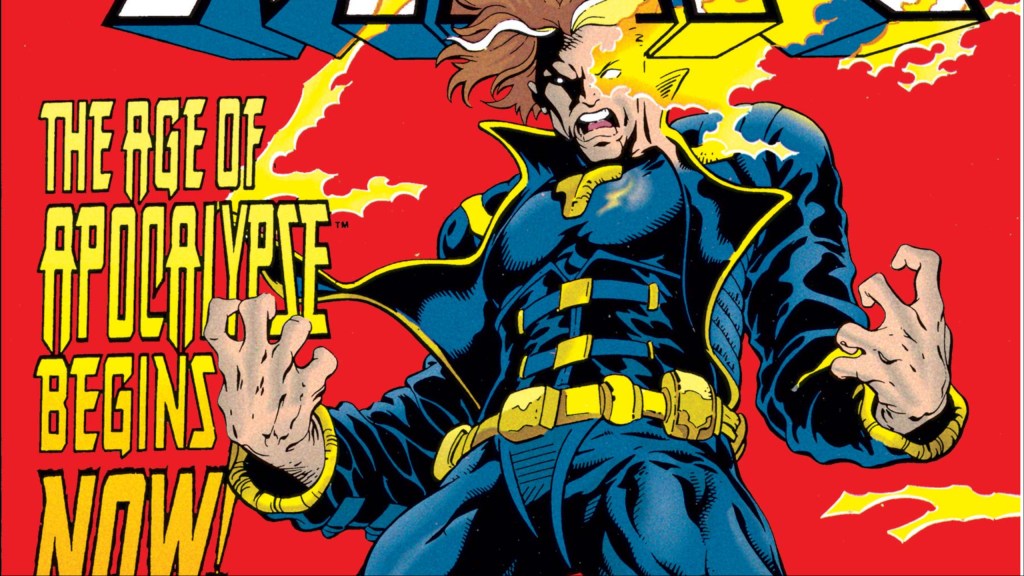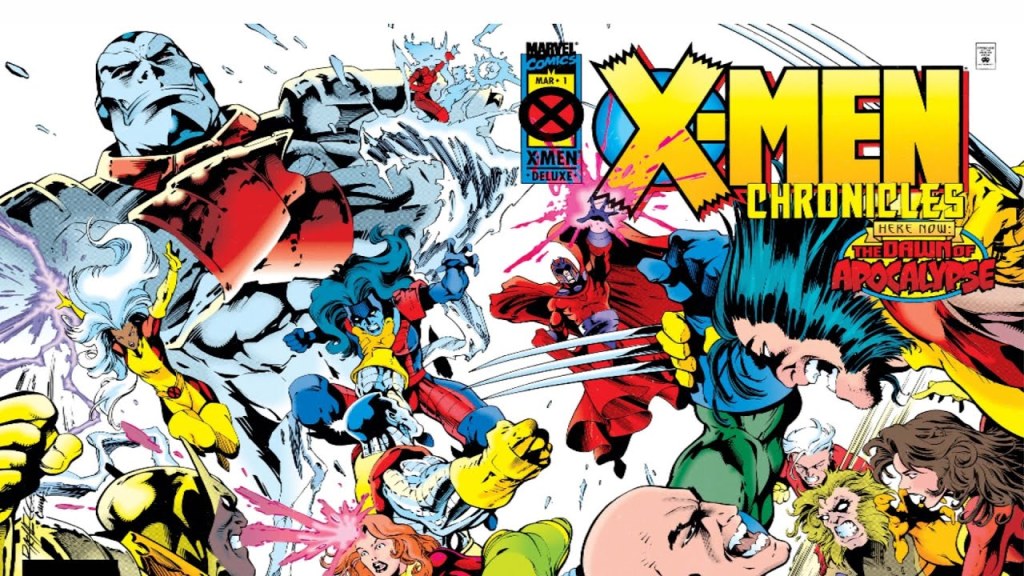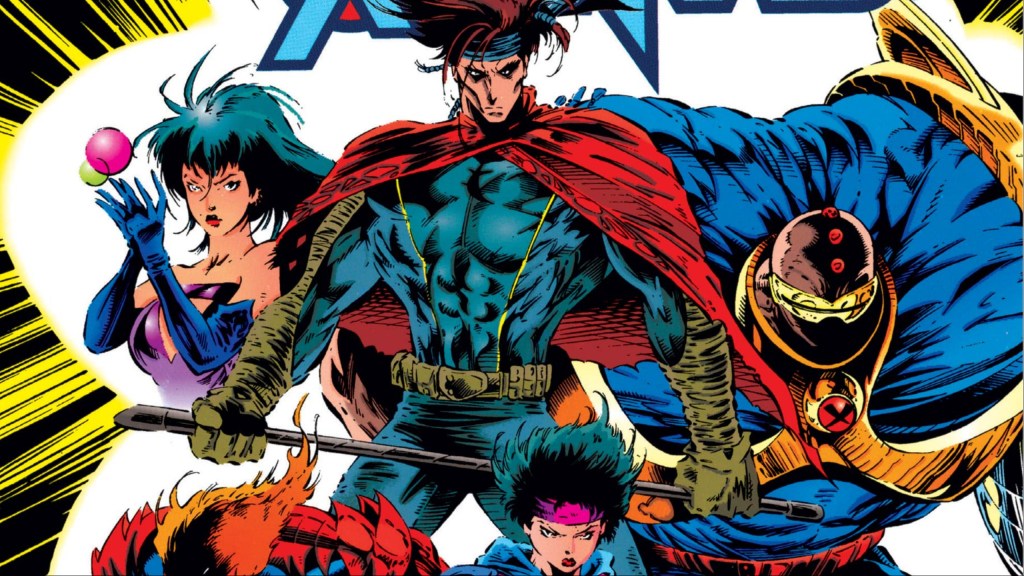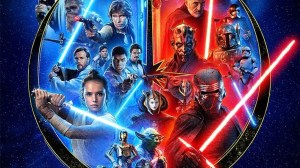The X-Men are Marvel’s bestselling team of all-time, with the their most popular decade being the ’90s. There are a lot of must-read X-Men stories, and the popularity of the X-Men in the ’90s are a big reason the X-Men have stayed in the spot they’ve been ever since. There are a lot of great ’90s X-Men stories — and some not so great — but one of them stands tall in the memories of readers: the alternate universe classic The Age of Apocalypse. The Age of Apocalypse took the comic industry by storm, and is still as popular now as it was back then. Recently, Marvel has announced the return of The Age of Apocalypse’s X-Men in 2025, which has brought The Age of Apocalypse back into fans’ minds. The Age of Apocalypse was a one of a kind moment in X-Men history, and many fans are excited to see where Marvel takes the alternate universe next.
Videos by ComicBook.com
The Age of Apocalypse consisted of multiple miniseries — eight four issue series and two two issue series — and two book end issues. Down the line, for the tenth anniversary of The Age of Apocalypse, Marvel released a six issue miniseries, which has become pretty controversial (but more on that later), and multiple one-shots. There was even an Age of Apocalypse series that ran after the Uncanny X-Force story “The Dark Angel Saga”. Miniseries have long been a big part of what made fans love The Age of Apocalypse, so we’re going to take a look at the eleven Age of Apocalypse miniseries, and rank them.
11) X-Calibre

None of The Age of Apocalypse miniseries are bad, but they aren’t all good, if that makes sense. X-Calibre, by Warren Ellis, Ken Lashley, Roger Cruz, Renato Arlem, Charles Mota, and Eddie Wagner, is easily the least important of The Age of Apocalypse miniseries and that doesn’t really help it as a story. It follows Nightcrawler, tasked by Magneto to find Mystique and Destiny, all to help restore the universe to the way it should be. It’s a perfectly fine series, but it just doesn’t have anything special about it. There’s also several fill-in artists over its run, which hurts the book’s artistic identity. This is a pretty good Nightcrawler story, but it just can’t really stand with the better miniseries on this list.
10) X-Man

X-Man, by Jeph Loeb and Steve Skroce, was the replacement for Cable. It starred Nate Grey, a mutant created by Mister Sinister out of the DNA of Cyclops and Jean Grey. Sinister meant to keep him as a secret weapon to use against Apocalypse, but Forge was able to break him out of Sinister’s stronghold. The story follows Nate, Forge, and a traveling theater troupe called the Outcasts — Sauron, Mastermind, Toad, Brute, and Siryn — as they tried to stay one step ahead of Apocalypse and Sinister alike, both of whom are trying to get their hands on Nate. Skroce’s art is fantastic, but other than that, this is very much an average book. Nate is a cool character, which is why this series continued after The Age of Apocalypse ended — when the book got much better — but this one barely touches on the main plot of The Age of Apocalypse. Fine to read if you come across it or if it’s included in a collected edition, but not something you need to read.
9) X-Men Chronicles

X-Men Chronicles was one of the two issue miniseries from The Age of Apocalypse and took place before the main story, giving readers two different stories about Magneto’s X-Men and their war against Apocalypse. X-Men Chronicles, by Howard Mackie, Terry Dodson, and Ian Churchill, tells two stories. The first story takes place in Magneto’s Mount Wundagore base as he trained his X-Men and introduces them to their newest member, Weapon X. An attack by Apocalypse and his Horsemen calls the team away, which leads to a disaster for Magneto and his family. The second story begins with Weapon X and Jean Grey leaving the team, and tells the story of the team’s war against Apocalypse’s newest servant, a powerful mutant named Wolverine. It also gives the origin of the relationship between Rogue and Magneto, and Gambit’s grudge against them. X-Men Chronicles is a good series with great art, but there’s really nothing special about it. Much like X-Man, it’s a book that you don’t need to read, but is worth it if you can find it easily.
8) Age of Apocalypse

Marvel made a pretty big deal of the tenth anniversary of The Age of Apocalypse, all revolving around this six-issue continuation, which would prove controversial in the years to come because of its creative team. Age of Apocalypse was written by a writer named Akira Toshida… who just so happens to be current Marvel editor-in-chief C.B. Cebulski when he was pretending to be Japanese so he could write for the publisher. Cebulski “found” Yoshida because of his job of bringing Japanese talent to Marvel. Taken on its own, Age of Apocalypse, with sensational art from original The Age of Apocalypse artist Chris Bachalo (seriously gorgeous art, I can’t stress that enough), is a pretty good story. It tells how the X-Men, and the world, survived the final nuclear attack on Apocalypse, and has a cool homage to then-current X-Men stories, as well as picking up the most heartbreaking plot thread of the original Age of Apocalypse. It’s honestly a really good series, but has since been overshadowed by the controversy over its author. However, it’s definitely worth hunting down if you’re a fan of The Age of Apocalypse.
7) Gambit and the X-Ternals

Gambit and the X-Ternals, by Fabian Nicieza, Tony Daniel, and Salvador Larocca, took the place of X-Force. Gambit was a former member of the X-Men, leaving after the battle with Wolverine in X-Men Chronicles #2 when he felt Magneto stole Rogue from him, and formed the X-Ternals — Lila Cheney, Jubilee, Strong Guy, and Sunspot — a group of mutant thieves fighting Apocalypse on their own. Magneto asks Gambit to take the X-Ternals to the Shi’Ar Empire, using Cheney’s teleportational powers, and steal the M’Kraan Crystal, as part of the plan to go back in time and save Charles Xavier from Legion. However, there’s a traitor on the team, one who wants to take the Crystal for Apocalypse. Gambit and the X-Ternals is an action packed ride. Nicieza loved writing Gambit on X-Men, and that love extended to The Age of Apocalypse. If there’s any weakness to this series, it’s the art change after issue #2. Daniel’s art in the first two issues is much better than Larocca’s art in the last two issues, and it hurts the book. This one is really important to overall story of The Age of Apocalypse, though, and it’s definitely a must-read to understand the original story.
RELATED: Marvel Wanted a Different Director for X-Men (But They’re Making Another MCU Movie)
6) X-Universe

X-Universe, by Scott Lobdell, Terry Kavanaugh, Carlos Pacheco, and Terry Dodson, told the story of the rest of the Marvel Universe during The Age of Apocalypse. The story follows characters like Gwen Stacy, Victor Von Doom, Ben Grimm, Bruce Banner, Hawkeye, Susan Storm, Anthony Stark, Daredevil, Kingpin, Bullseye, Doctor Octopus, and more as they deal with a world gone wild. The story takes place in Eurasia, as Apocalypse’s Horseman Mikhail Rasputin decides to defect to the Eurasian Human High Council’s side. X-Universe is awesome. It’s the other two-issue miniseries, and it does a brilliant job of telling its story. The art, from legends like Pacheco and Dodson, is amazing. X-Universe is probably one of the harder to find miniseries from The Age of Apocalypse, but it is a hundred percent worth hunting down.
5) Factor X

Factor X, by John Francis Moore, Steve Epting, and Terry Dodson, followed Prelates Cyclops and Havok as they worked in the court of Apocalypse. The Summers brothers had served Sinister for years, working with Beast to capture humans and mutants alongside Northstar, Aurora, and the Bedlam Brothers. Sinister’s departure from Apocalypse’s service sees Havok finally decided to kill his brother, who was always Sinister favorite, in an effort to become a new Horseman of Apocalypse. That’s the basic premise of the book — Havok against Cyclops — forcing the rest of the cast to choose sides. Jean Grey shows up in issue #3, and things go from bad to worse. Factor X is a great look at the inside of Apocalypse’s kingdom, a place of betrayal and brutality, with brilliant characters and wonderful art.
4) Amazing X-Men

Amazing X-Men, by Fabian Nicieza and Andy Kubert, follows Quicksilver’s X-Men team as they work to save humans trying to get to the Sentinel air lift, as Sentinels bring humans out of Apocalypse’s Americas to Eurasia. This puts them up against Abyss, Horseman of Apocalypse, in the book’s first two issues. The third issue is all about Apocalypse coming for Magneto, pitting the two of them against each other, and the last issue sees Quicksilver’s team try to save Bishop from Abyss. This is a top tier X-Men book. The book’s cast — Quicksilver, Storm, Banshee, Dazzler, and Exodus — is amazing, showing why Nicieza is one of the unsung heroes of ’90s X-Men. Andy Kubert’s art is some of the best of his career, hand down. Amazing X-Men is awesome, and that’s really all there is to it.
3) Astonishing X-Men

Astonishing X-Men, by Scott Lobdell and Joe Madureira, focused on Rogue’s team of Sabretooth, Wild Child, Blink, Morph, Sunfire, and Iceman as they battled against Holocaust, Apocalypse’s son, as he tried to finally exterminate the last free humans left in North America. This is easily one of the most beloved of The Age of Apocalypse‘s miniseries hands down. It’s the book that made a generation of X-Men fans fall in love with Blink, made Sunfire cool for the first time ever, and has one of the best conceptions of Sabretooth in Marvel’s multiverse. Joe Madureira’s art is out of this world — issues #2 and #4 are the highlights of the series, with awesome battles between Sabretooth and Holocaust and then Blink and Holocaust. This is a favorite of a lot of fans, and for good reason; it’s an awesome X-Men romp, showing why the team is great anywhere in the multiverse.
2) Weapon X

Weapon X, by Larry Hama and Adam Kubert, follows the adventures of Logan, the titular Weapon X, and Jean Grey, as they work for the Human High Council against Apocalypse’s forces. The two of them soften up North America’s defenses for the Sentinel Air Lift, as well as paving the way for humanity’s doomsday strike. Jean leaves the book after issue #2 when she finds out about how far humanity is going to go to destroy Apocalypse, with Logan hunting down Gateway to navigate the human dirigible fleet with the help of Carol Danvers in issues #3 and #4. Weapon X is top shelf Wolverine. Hama is in the opinion of many the greatest Wolverine writer ever, and he gives readers a potent mix of action, adventure, and pathos. Kubert’s art is awesome, his detailed pages containing some of the coolest action scenes in the entire Age of Apocalypse. Weapon X is a full throttle ride, from two masters of the comic medium.
1) Generation Next

Generation Next, by Scott Lobdell and Chris Bachalo, is a heartbreaking masterpiece, one which will keep readers on the edge of their seats throughout its four-issue run. Magneto sends Colossus and Kitty Pryde along with their training class of X-Men — Husk, Chamber, Mondo, Skin, Vincente, and Know-It-All — to the Seattle Core, where they have to find Colossus’s sister Illyana Rasputin, so she can activate the M’Kraan Crystal with her latent mutant powers. What follows is a harrowing journey into the belly of the beast, as the next generation of X-Men do their best to free one person from a slave labor camp. It’s a story that has it all — awesome action, amazing characters, spinetingling suspense, and a surprise ending you’ll never see coming that will break you heart into a million pieces. Generation Next is the best work in Scott Lobdell’s entire career. He sets up an awesome story right from the start. However, Bachalo’s art is the real MVP here. His pages are unimaginably detailed, and perfectly capture the tone and action of Lobdell’s script. This is the not only the greatest story from The Age of Apocalypse, but also one of the greatest Marvel stories of the ’90s.
What’s you favorite Age of Apocalypse miniseries? Sound off in the comments below.








